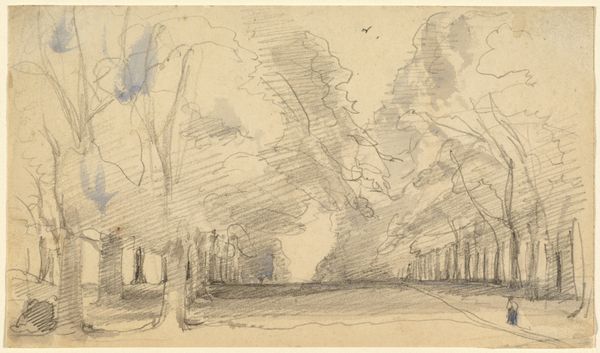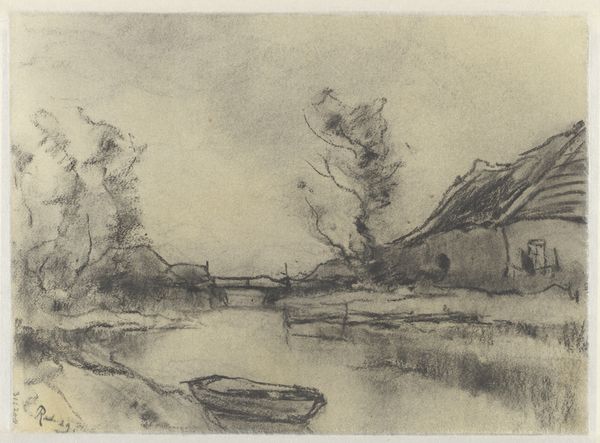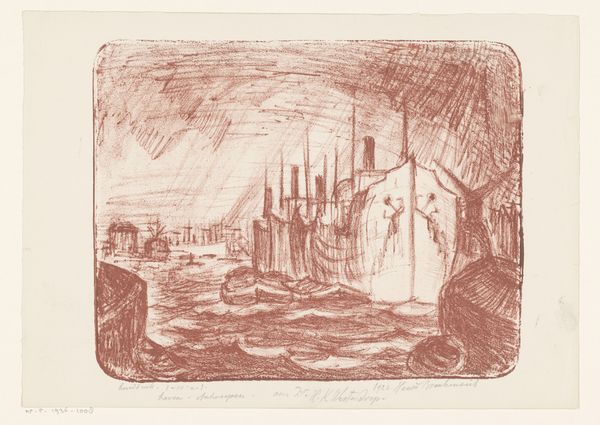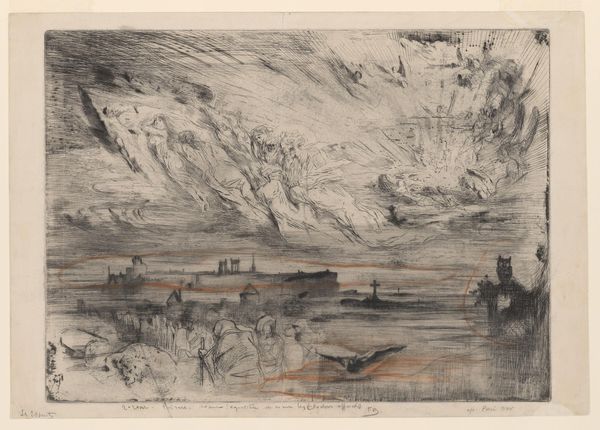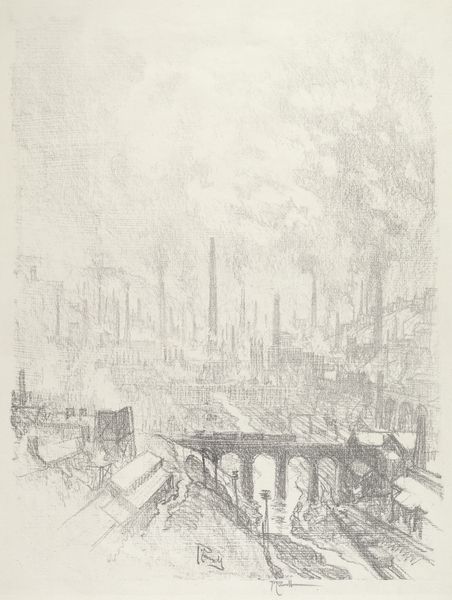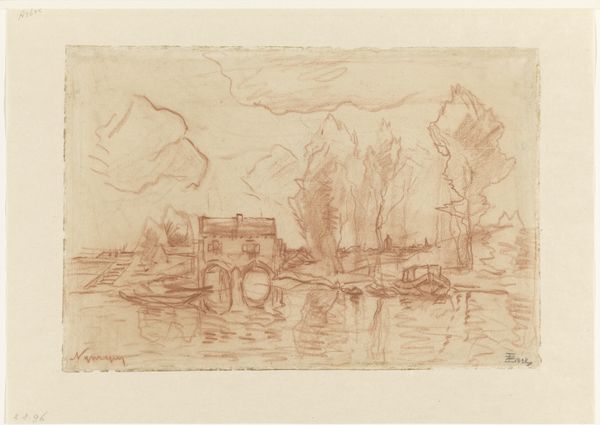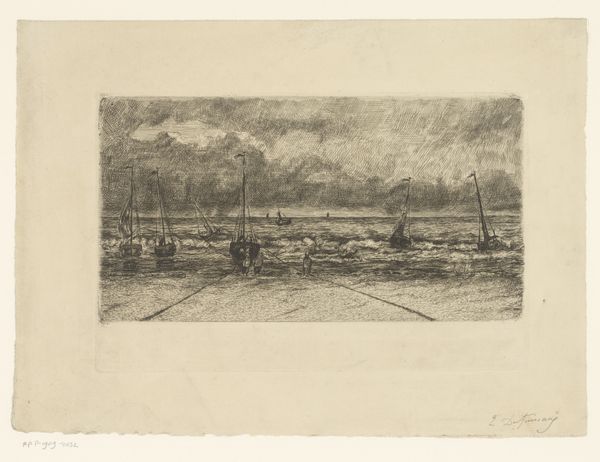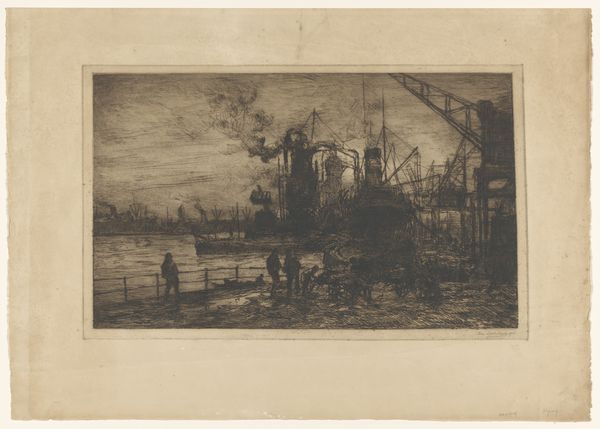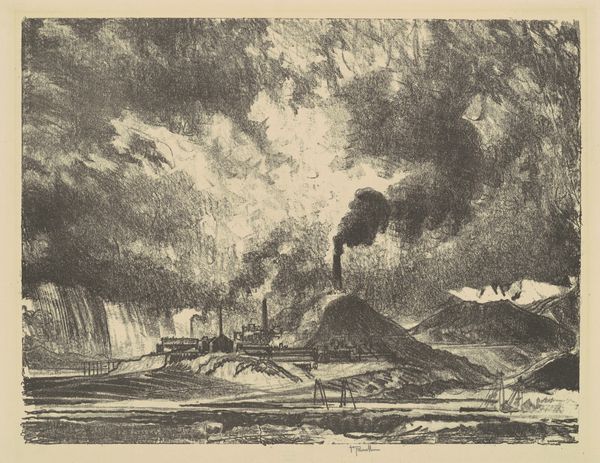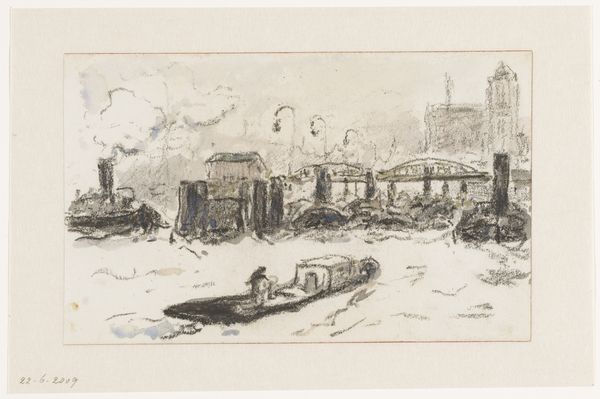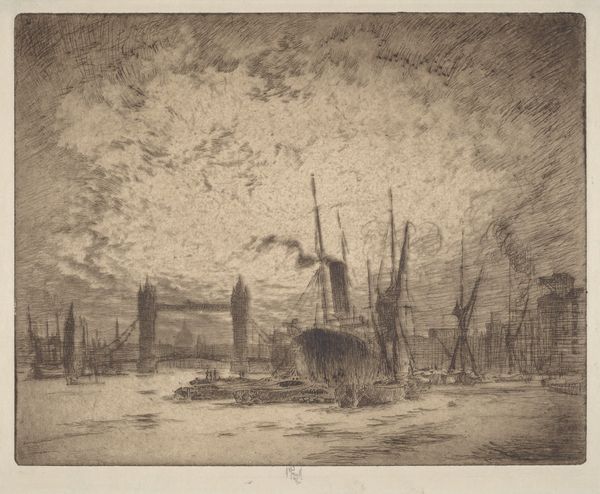
drawing, charcoal
#
drawing
#
landscape
#
sketchbook drawing
#
cityscape
#
charcoal
#
realism
Dimensions: height 320 mm, width 480 mm
Copyright: Rijks Museum: Open Domain
Editor: So, this is Dirck Nab’s "Hoogovens bij IJmuiden," made between 2011 and 2013. It’s a charcoal drawing, and it has this hazy, almost dreamlike quality despite depicting a very industrial scene. What stands out to you about this work? Curator: The stark contrast between the industrial subject matter and the delicate charcoal medium immediately draws my attention. Nab’s choice to use charcoal, a material directly linked to the process of burning and transformation, when depicting these steel mills isn't arbitrary. The materiality directly reflects the transformations inherent in industrial processes. Editor: That's a great point. I hadn't thought about the connection between the charcoal itself and the industrial process. How does that connection inform the social context, do you think? Curator: Absolutely. The drawing also underscores the impact of labor and production on the landscape and its communities. The very act of representing these mills – sources of employment but also pollution – begs us to think about the negotiations involved in the manufacturing economy. Nab's process mimics the real-world transformation of resources to create something new. Editor: So it’s less about the romantic view of industry and more about the nitty-gritty of how things are made? Curator: Precisely. By highlighting the process and materiality, Nab’s work compels us to reconsider the social costs of production and challenges traditional, sanitized boundaries between high art and industry. Does considering the materials this way affect how you perceive the piece? Editor: It certainly does. I see the drawing as a more complex statement now, not just a landscape. It really makes you think about where things come from, and at what cost. Thanks for sharing your expertise. Curator: My pleasure. Examining art through the lens of material and labor makes us question not only what we see, but also the systems behind what we consume.
Comments
No comments
Be the first to comment and join the conversation on the ultimate creative platform.

